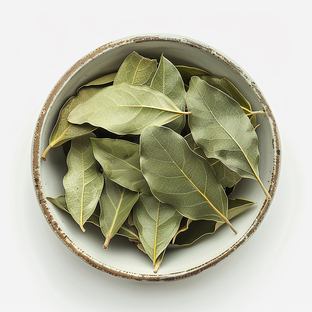Leading Supplier of Premium Bay in South Korea | Trusted Global Spice Supplier Discover the aromatic essence of our high-quality Bay. Known for its unique qualities, these leaves are a versatile addition to various applications. Buy Premium Quality Bay at competitive prices from Royal Divine, your trusted supplier in South Korea
Ideal for a Variety of Cuisines, Our Bay Ensure a Delightful Culinary Experience. Trust Royal Divine for the finest spices at unbeatable prices. As a leading supplier and global authority on Bay, we deliver high-quality products to major South Korea locations including Seoul, Busan, Incheon, Daegu, Gwangju.
Tejpatta, also known as bay leaves, are aromatic leaves derived from the Laurus nobilis tree. These leaves have a rich green color and a strong, herbal aroma with hints of floral and citrus notes. Tejpatta leaves are commonly used as a flavoring agent in cooking and are often added to soups, stews, sauces, and rice dishes.

| Attribute | Details |
|---|---|
| Botanical Name | Laurus nobilis |
| Common Name | Bay Leaf, Bay Laurel |
| Family | Lauraceae |
| Genus | Laurus |
| Species | Laurus nobilis |
| Origin | Native to the Mediterranean region |
| Plant Type | Evergreen shrub or small tree |
| Height | 2-12 meters (6.5-39 feet) |
| Leaves | Oval, lance-shaped, glossy, dark green, aromatic, 6-12 cm long |
| Flowers | Small, pale yellow, in clusters |
| Fruit | Small, dark purple to black berry |
| Uses | Culinary herb (flavoring in soups, stews, and sauces), medicinal purposes, ornamental plant |
| Cultivation | Grown in well-drained soil, prefers full sun to partial shade, drought-tolerant once established |
| Harvesting | Leaves are harvested and dried for culinary use |
Bay Leaf Specification
| Properties | Values/Limits |
|---|---|
| Product Name | Bay Leaves |
| Shelf Life | 2 years |
| Moisture Content | Max. 10% |
| Ash Content | Max. 6.50% |
| Size | Whole leaves |
| Flavor | Aromatic, slightly bitter, and savory |
| Grade | A&B |
| Admixture Level | Max. 2% |
| Color | Green |
| Drying Process | Sun Dry |
| Packaging | Customizable, specify preferred packaging options (e.g., bags, jars, bulk) |
| Origin | Specify country or region of origin |
| Certification | Optional (e.g., Organic, Non-GMO) |
| Usage | Culinary, Seasoning |
| Storage | Store in an airtight container in a cool, dark place away from moisture |
Bay Leaf Nutrition Facts - Serving Size: 100gm
| Nutrient | Amount per 100g |
|---|---|
| Calories | 313 kcal |
| Protein | 7.61 g |
| Fat | 8.36 g |
| Saturated fat | 2.3 g |
| Monounsaturated fat | 2.6 g |
| Polyunsaturated fat | 1.4 g |
| Carbohydrates | 75.81 g |
| Dietary fiber | 26.3 g |
| Sugars | 2.6 g |
| Calcium | 834 mg |
| Iron | 43 mg |
| Magnesium | 120 mg |
| Phosphorus | 113 mg |
| Potassium | 529 mg |
| Sodium | 23 mg |
| Zinc | 3.7 mg |
| Vitamin C | 46.5 mg |
| Vitamin B6 | 1.7 mg |
| Folate (B9) | 180 �g |
| Vitamin A | 6185 IU |
| Vitamin K | 1.7 �g |
Aroma and flavor
Bay leaves are aromatic leaves commonly used as a flavoring agent in cooking. With a subtle herbal fragrance and a slightly bitter, savory taste, they add depth to a variety of dishes. Whether simmered in soups and stews, infused in sauces, or used to flavor rice and grains, bay leaves impart a distinctive aroma and flavor profile. While they're not typically consumed whole due to their tough texture, they release their essence when cooked, enhancing the overall complexity of a dish. Bay leaves are a staple in many cuisines around the world and are valued for their ability to elevate the flavors of both savory and hearty dishes.
Origin
Bay leaves are aromatic leaves from the bay laurel tree, scientifically known as Laurus nobilis. These leaves have a subtle, herbal flavor with notes of mint and spice. Commonly used in cooking, bay leaves are added whole to soups, stews, sauces, and braises to infuse dishes with their unique aroma and flavor. They are typically removed before serving as they can be tough and indigestible. Bay leaves are also used in pickling and can be dried and ground for use in spice blends.
Crop Season
Bay leaves are aromatic leaves from the bay laurel tree (Laurus nobilis), native to the Mediterranean region. Harvesting bay leaves involves plucking mature leaves from the tree, typically throughout the year as needed. These leaves are then either used fresh or dried for preservation. Fresh bay leaves can be used immediately in cooking, while dried bay leaves are often used for longer-term storage and have a more concentrated flavor. Bay leaves are a staple herb in many cuisines worldwide, adding a subtle, earthy aroma and flavor to soups, stews, sauces, and marinades. They are often used whole during cooking and removed before serving due to their tough texture. In addition to culinary uses, bay leaves are also believed to have various health benefits and are used in traditional medicine to aid digestion and alleviate respiratory issues. Proper storage in an airtight container in a cool, dry place helps maintain the flavor and aroma of bay leaves over time.
